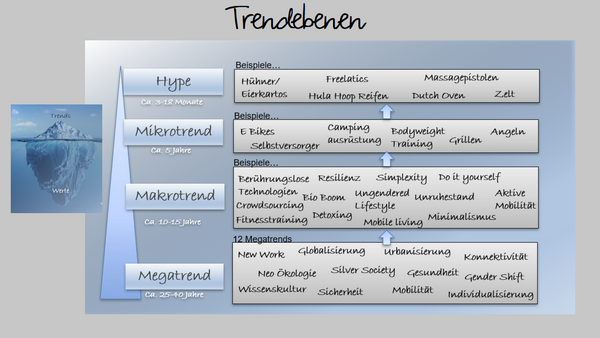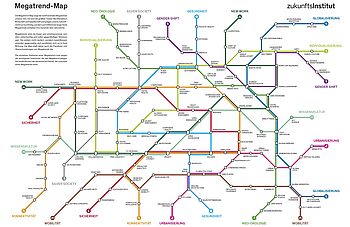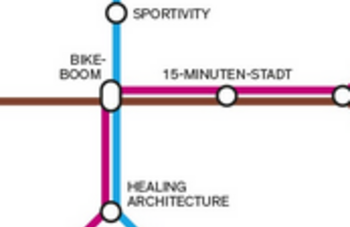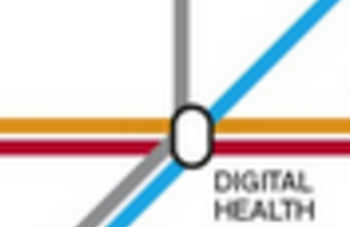Idea Development #1: Megatrends
Megatrends - How they influence the success of product innovations
Why some product ideas are successful und others are not, has a lot to do with the needs and interests of market participants and target groups. But how does a product go from hype to trend? In this article, we show you how megatrends influence the success of product innovations.
The Trendlevels
Products that can successfully exist on the market fulfill the conscious or unconscious wishes and needs of a large group of market participants. These needs can differ, for example, regionally or culturally and, above all, exist for different periods of time. They represent the various trend levels.
Based on the twelve defined megatrends, which globally shape the world population for a period of approx. 25 to 40 years, derived macro trends (period of ten to 15 years), micro trends (period of approx. five years) and short-term hypes (approx. three to 18 months) develop. From the megatrends to the trend level of the hypes, the number of interested market participants becomes smaller and smaller. Regional characteristics, individual interests and other factors lead to a focusing and specialization in the individual topic areas. Among other things, the megatrend "mobility" gave rise to the macrotrend "active mobility" (including the bike boom). At the micro-trend level, this is further specialising in the "e-bike" trend, for example.
From Trend to Hype - and back
The example of the "tent" as a hype product chosen in the illustration results from the micro-trend "camping equipment", which finds its basis in the macro-trends "minimalism", "mobile living", "active mobility" and "resilience", among others, and thus in the mega-trends "mobility", "individualisation" and "health". This example clearly shows that successful products are often based on several mega and macro trends. The tent as a current hype product therefore has high potential to also be successful on the market in the long term and possibly itself become a microtrend that gives rise to other hype products.
Starting point for successfull innovations
Conversely, this observation shows that in the search for a successful product innovation, we should move as far as possible into areas that contain overlaps of several mega- and macro-trend currents (and the customer wishes depicted by these). Such products have a particularly broad and deep basis for success in the market.
The Zukunftsinstitut's megatrend map (Fig. 2) is particularly helpful for orientation. It shows the current megatrends and the macro-trends and overlaps that can be derived from them. You can find the megatrend map here: https://www.zukunftsinstitut.de/artikel/die-megatrend-map/
The "bike boom" mentioned at the beginning can be seen here, for example, in the intersection of the megatrends "mobility", "urbanisation" and "health" (see Fig. 3). Nodes shown on the map with two or more overlaps of various megatrends can therefore be interesting starting areas for the development of successful product innovations. The "Digital Health" node, for example, offers an intersection of even four megatrends (see Fig. 4) and thus exhibits a high potential for successful products in the future.
More info on the individual megatrends and their more in-depth macro trends can be found here: https://www.zukunftsinstitut.de/artikel/megatrend-glossar/
Product innovation: New development or improvement?
In addition to knowledge about trends and hypes, it is of course important to understand how a product innovation can come about. There are basically two ways to do this: New product development and product improvement.
In our chosen marquee example, the hype is driven by a deeper understanding of customer needs and the resulting improvements to existing products: Successful products in this area are primarily made of ultra-light materials, are particularly quick to set up (keyword "throwing tent) and thus meet the wishes of the current target group.
More on the topic of "new product development vs. product improvement" can be found soon in another article on product innovations, here in our blog "Lese&Gründe".




